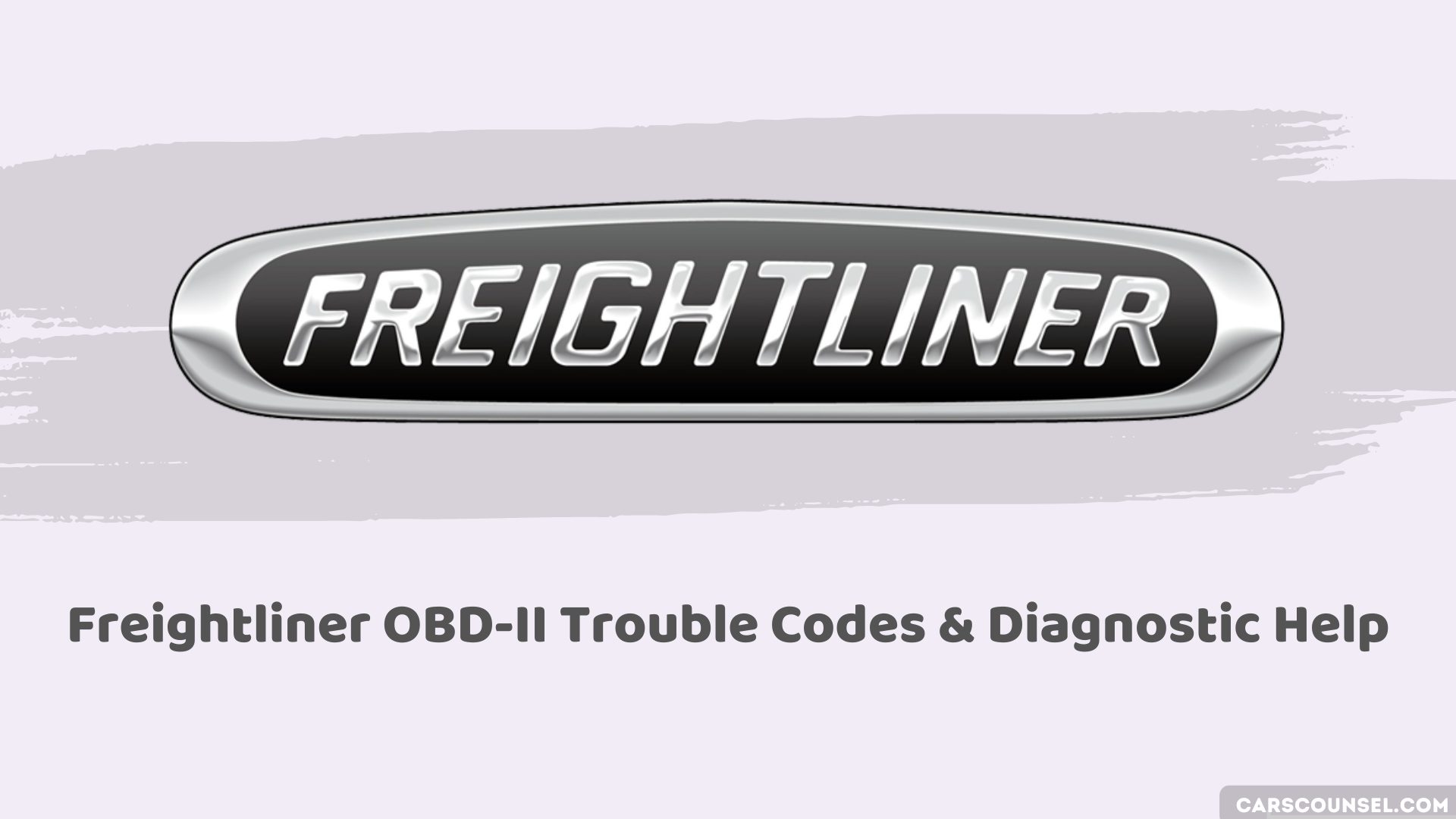Do you think that staying on top of routine maintenance is enough to prevent OBD-II codes from appearing in your Freightliner truck? While regular checks and timely repairs can go a long way, it’s not a foolproof method. Even with proper care, issues can still arise, and that’s where understanding Freightliner OBD-II codes comes in.
By knowing what these codes mean and how to clear them, you’ll be better equipped to diagnose and fix problems quickly, saving you time and money in the long run. But how do you tap into this valuable information?

Quick Navigation
Understanding Freightliner Fault Codes
When troubleshooting issues with your Freightliner truck, deciphering fault codes is key to identifying the root cause of the problem.
You’ll encounter diagnostic trouble codes (DTCs), which are alphanumeric codes that correspond to specific issues. These codes are typically OBD-II codes, which are standardized across the industry.
When the check engine light illuminates, it’s an indication that a fault code has been triggered. You can access the code list using diagnostic tools, such as a code reader or scan tool.
Fault codes can relate to various systems, including Engine Power and oil pressure. Understanding these codes is vital to resolving the issue efficiently.
Once you’ve addressed the problem, you can clear codes, and the check engine light will turn off.
Reading and Clearing OBD-II Codes
Reading and clearing OBD-II codes on your Freightliner truck requires a systematic approach to diagnose and resolve underlying issues.
You’ll need a diagnostic scan tool, such as the Detroit Diesel Diagnostic Link (DDDL) or Freightliner ServiceLink, to access the vehicle’s onboard computer system and retrieve trouble codes.
Be cautious when clearing codes, as simply canceling the code without addressing the root cause can lead to further damage or safety risks. Verify you understand the code’s meaning and repair or resolve the underlying issue before clearing it.
Then, use the diagnostic scan tool to clear the code and drive your truck for a certain distance or number of drive cycles to confirm the code doesn’t reappear.
Preventing and Handling OBD-II Codes
By staying proactive with regular vehicle maintenance, you can prevent OBD-II codes from appearing in the first place, saving yourself time and money down the line.
Regular maintenance includes routine inspections, fluid changes, and timely repairs to address minor issues before they escalate into more significant problems.
This proactive approach enables you to identify and fix issues before they trigger diagnostic trouble codes.
- Implement ongoing fleet monitoring to detect OBD-II codes and associated issues as they occur, facilitating swift responses to minimize vehicle downtime and reduce repair expenses.
- Centralize code tracking to gather OBD-II code data from all fleet vehicles into one system, simplifying data management and access.
- Utilize telematics systems like CalAmp iOn to provide live information about vehicle performance, location, and maintenance needs, contributing to cost reduction by preventing major breakdowns and optimizing vehicle performance and fuel efficiency.
Most Common Freightliner OBD-II Trouble Codes
| Code | Description |
|---|---|
| P1000 | Ignition coil, 5 -primary circuit range/performance |
| P1001 | Ignition coil, 5 -primary circuit high |
| P1002 | Ignition coil, 5 -primary circuit low |
| P1003 | Ignition coil, 5 -primary circuit open |
| P1004 | Ignition coil, 5 -primary circuit range/performance |
| P1013 | Ignition coil, 1 -secondary circuit high |
| P1014 | Ignition coil, 1 -secondary circuit low |
| P1015 | Ignition coil, 1 -secondary range/performance |
| P1016 | Ignition coil, 1 -secondary circuit open |
| P1017 | Ignition coil, 4 -secondary circuit high |
| P1018 | Ignition coil, 4 -secondary circuit low |
| P1019 | Ignition coil, 4 -secondary range/performance |
| P1023 | Ignition coil, 3 -secondary range/performance |
| P1024 | Ignition coil, 3 -secondary circuit open |
| P1025 | Ignition coil, 6 -secondary circuit high |
| P1026 | Ignition coil, 6 -secondary circuit low |
| P1027 | Ignition coil, 6 -secondary range/performance |
| P1028 | Ignition coil, 6 -secondary circuit open |
| P1029 | Ignition coil, 2 -secondary circuit high |
| P1030 | Ignition coil, 2 -secondary circuit low |
| P1031 | Ignition coil, 2 -secondary range/performance |
| P1032 | Ignition coil, 2 -secondary circuit open |
| P1033 | Ignition coil, 5 -secondary circuit high |
| P1034 | Ignition coil, 5 -secondary circuit low |
| P1035 | Ignition coil, 5 -secondary range/performance |
| P1036 | Ignition coil, 5 -secondary circuit open |
| P1045 | Heated oxygen sensor (H02S) 1, bank 1 system too rich |
| P1046 | Heated oxygen sensor (H02S) 1, bank 1 system too lean |
| P1047 | Heated oxygen sensor (H02S) 1, bank 1 inactive |
| P1048 | Heated oxygen sensor (H02S) 1, bank 1 range/performance |
| P1049 | Heated oxygen sensor (H02S) 2, bank 1 system too rich |
| P1050 | Heated oxygen sensor (H02S) 2, bank 1 system too lean |
| P1051 | Heated oxygen sensor (H02S) 2, bank 1 inactive |
| P1052 | Heated oxygen sensor (H02S) 2, bank 1 range/performance |
| P1053 | Heated oxygen sensor (H02S) 1, bank 1 circuit high |
| P1057 | Heated oxygen sensor (H02S) 2, bank 1 circuit high |
| P1065 | AIR pump relay -circuit high |
| P1066 | AIR pump relay -circuit low |
| P1067 | AIR pump relay -circuit open |
| P1069 | AIR switching valve -circuit malfunction |
| P1070 | AIR switching valve -circuit malfunction |
| P1071 | AIR system |

